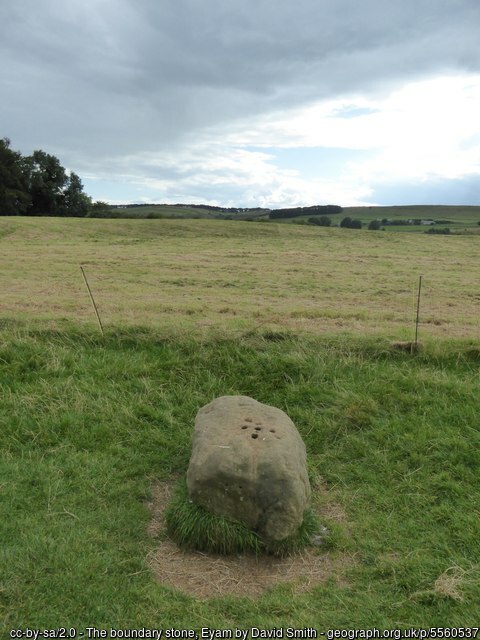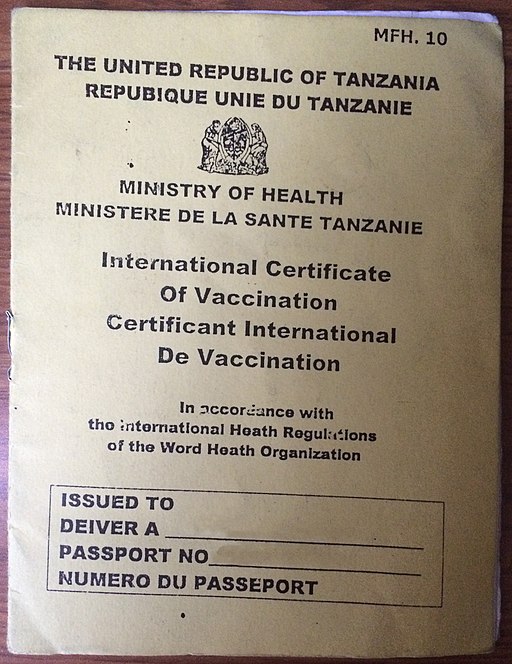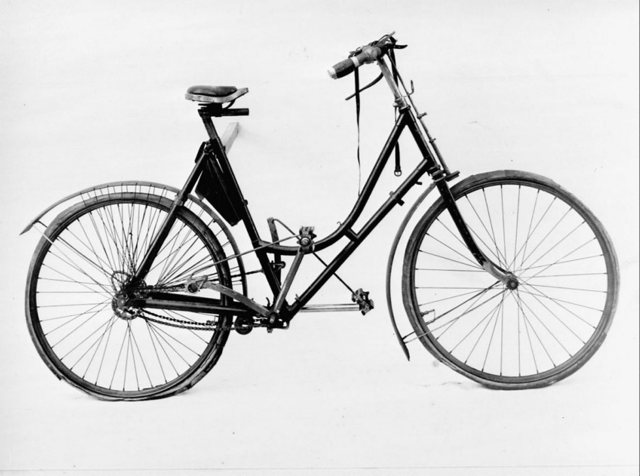
I’ve tried to avoid predictions this year for obvious reasons, but I think we’re seeing signs of impending dawn on the new era. I won’t call it Post-Covid, because that’s supposing too much, but definitely there are the signs of a new infrastructure being built that will allow us to return to something like our previous existence. But I think there are still parts of it that we haven’t thought through.
For our society to function we need people to be able to move around relatively freely. It doesn’t matter if it’s a businessman flying off to check out a subcontractor, food being trucked from Porto-Novo to Niamey, or me meeting one of my clients in the CBD. The modern world doesn’t function without movement. Covid has made that hard because it highlights the contradiction between our lifestyle and our biology, which appears to be geared to small, self-contained groups — villages, or tribes, if you will — which may move around but do not come into contact with other groups. The first recorded pestilence, for example, is believed to have been when the Philistines usurped the Arc of the Covenant and moved it from place to place in about 1190 BC. Disease broke out in each place — probably bacillary dysentery. Blaming the Arc, the Philistines returned it to the Israelites, possibly preventing the latters’ extinction. But as Jonathan Cossar writes: “It is an early example of the spread of infection from the interaction of ancient peoples in their pursuit of territorial expansion… Thus history can be regarded as an account of man’s traveling exploits and the ensuing consequences.”1 Where people remained relatively isolated, and did not travel, scourges sometimes spared them: The Black Death, for example, sometimes skipped sparsely populated rural areas entirely, while cities and towns might lose as much as 50-60% of their populations.2
While early plagues tended to follow armies, later ones followed explorers and colonizers — Columbus bringing smallpox to the Americas, yellow fever imported by (immune) African slaves decimating the Spanish colonists, British soldiers visiting cholera on East Asia, the Middle East and Russia. And thereafter it has been largely trade, with international travel merely accelerating the vector. As Cossar, writing in 1994, predicted: “The potential for the emergence of a ‘new’ antigenic subtype of type A influenza remains, and with China but a jet flight away via the staging stop of Hong Kong, a fresh epidemic strain can be imported to New York in 16 hours or to London in 14 hours. Thus the forgotten history of 70 years ago may come to life at any time, thanks to ‘jet age’ travel.” When he wrote that there were 435 million international tourist visits a year, according to the World Tourism Organisation. By 2018 that number had more than tripled.
So the vision of an emergence from Covid-19 is one within an international system where we are able to demonstrate we have taken a vaccine recognised by both departure and arrival authorities. Where we can show that we’ve been tested by an approved lab several days before departure, and probably shortly before boarding. Once again, the labs will need to have been recognised by both sets of authorities. That this won’t have a seriously chilling effect on travel seems hard to argue. I was never a huge fan of airports, but this will make the process increasingly burdensome. Yes, you might be able to flash an app at an official to demonstrate you’re good to go, but the chances of everyone on a flight being able to do that quickly and to the satisfaction of officials seems unlikely. For one thing, the procedure of confirmation is highly unlikely to be the same in each location. Even in the long term we’ve not adjusted well to the security theatre performance, not least because the requirements and procedures differ widely from place to place. I still shiver from the ticking off I got from a Heathrow security person for failing to do something or other that I’d never had to do elsewhere.
This is where initiatives like CommonPass, by The Commons Project, kick in. The project, which is already running in several travel corridors and will announce more later today (Thursday), gives travellers a “secure and verifiable way to document their health status as they travel and cross borders.” It takes the form of an app that includes unique IDs and a ‘trusted’ record of a valid PCR test or vaccination. Thomas Crampton, an old friend who heads marketing for the NGO, describes it as a “common trust network across international borders,” a digital way of sharing medical information safely, via a platform that anyone can plug into and build their own services on top of. He pointed to the hundreds of thousands of sea farers who have been stranded on their ships for months, unable to return home. (Thomas says they’re about to announce something specifically for these crews.)
This is good, make no mistake. There needs to be a trusted third party building this out, and with the heft to win over governments, airlines, medical institutions and labs. And there’s no talk of blockchain, which is probably a good thing.
But my gaze is on the longer term. What happens after what happens next?
The rise of a ‘health passport’ will have impacts on society that may outlive the pandemic. Thomas talked of there one day being no need for such medical documentation, but I’m not sure. At least, I’m not sure we’ll see them not required anywhere, meaning that we’ll probably need them (indeed the Yellow Card, nearly 100 years old, is still required in some places.) Just as we still have to play security theatre at airports, so we’ll still be required to show that we’re COVID-free, long after it has ceased to be a feature of our lives.

More broadly, we may have to consider more deeply travel itself. Do we need to travel as much as we do (or rather, did)? For one thing, it’s likely to be a lot more expensive, and for there to be fewer options. So the ‘necessity’ of travel may be something that managers, and civil servants will scrutinise closely. Applying for visas will become more cumbersome, and officials will be cautious in issuing them. A weekend in Saigon may just not be worth the hassle.
But there’s another aspect to this, beyond international travel. At what point does travel of any kind become something undesirable? When South Korean researchers dug into why one person in Jeonju, a city which hadn’t had a coronavirus case in 2 months, had become infected. Turned out it was from someone who was in the same floor of a restaurant for about 5 minutes — on opposite sides of the room. The flow of two overhead air-conditioning units carried the virus 20 feet through the air.
While the research and reconstruction behind this is impressive, to me the key factor was that the infected person was from another city — Daejon, an hour’s drive away (she had not informed contact tracers she’d made the trip.) Just as China took the radical step of sealing off Wuhan back in January, it seems the lesson to draw from the Korean research is not only that our idea of what constitutes ‘close contact’ wrong, but the key to ridding ourselves of the pandemic may be to isolate communities, not just by country or state border, but at smaller levels, both to keep infection out, and also to keep the spread within. The idea of a village requiring more proof of being virus-free than the next is not unthinkable.
Yes, this is being done in some places, of course, and lockdowns have already become localised. But beyond lockdown, when vaccines are widely adopted, the question will arise, not of ‘easing lockdown’, but of permitting travel. Right now that has been something that is left somewhat vague, because there’s nothing that anyone can do beyond taking a test to prove they’re virus-free and showing that they’re not subject to lockdown. But what happens when a vaccine is available? If you’re going to prevent someone from international travel if they haven’t taken a vaccine, why is that same rule not applicable to any kind of travel — across country, even across town, or even between buildings?
One interviewee for a consulting project I recently led, an experienced professional in the human logistics field, told me that the biggest long-term trend to emerge from Covid will be “the influence of government, on business and individuals.” He sees a growing share of government in industry, the economy and as a customer. Subsidies, and a growing regulatory rule in health, will be with us for a long time, and the speed with which it has happened in his field was “mind-boggling”, he said.
It’s hard to argue with that. When I asked Thomas of The Commons Project why it was not the WHO or IATA that was developing a solution, he said that his organisation would be happy to work with anyone, and was keen to forge partnerships. That may be true, but inevitably however agnostic the platform, the process will inevitably be one dominated and run by bureaucrats. It is a necessary, even welcome, step by governments, but one which will not be abandoned easily. It will be extremely hard to declare an end to Covid, because pandemics don’t just end. They come in waves, as we’ve found to our cost, and the end will only come when the last country declares itself Covid-free.
In the meantime a layer of authentication, however efficient, will have been added to travel. It is hard not to imagine that this layer will not become an ID of sorts: why should I risk the citizens of this town/village/building by letting you in if you can’t produce this document? Right now it’s a QR code but in the future it could be digital signal (RFID, BLE etc) that turnstiles on public transport, or in office blocks, look for before allowing the holder through. In some ways the more efficient and less frictionless the technology, the more likely it will be adopted beyond the confines of its originally intended use.
I may well be wrong. It may well be that economic priorities and sheer exhaustion (and incompetence) lead to these measures gradually being dropped. But I do think that the concept of travel, and mobility, will change, possibly radically. We have largely been focusing on the changes wrought by ‘working from home’, or as some prefer it, ‘working from anywhere’. But that is part of a much larger question about ‘movement’. We may simply find that movement is too hard, too costly, too inconvenient, that those of us who move are discriminated against, so much so we alter our habits. This will have a profound effect because for so long we’ve taken travel and mobility for granted, failing to understand its profound impact. That notion of mobility goes back a long way. The introduction of the affordable bicycle in England in the late 19th century allowed young rural men and women to venture beyond the village boundary and marry elsewhere. Before 1887, 77% of marriages took place between people from the same parish. Between 1907 and 1916 this had dropped to 41%. (The safe and cheap Rover ‘safety bicycle’ was introduced in 1885 3.)

We may not exactly return to that world, but the depth of the bureaucratic response to Covid is probably the single greatest reverse that the march towards frictionless mobility has encountered. Even war tends to cause mobility — fleeing refugees, moving armies and their logistical trains — indeed the Spanish flu was closely entwined with the First World War.
The counterpoint to this is the extraordinary resilience of supply chains — we have faced little of the shortages that usually accompany such global shocks. But all that shows is two things: that the movement of goods doesn’t require that many people, and those that are involved are considered both vital and, I suspect, expendable (this WSJ piece from South Korea tells the story of the impact on delivery workers, attention prompted by the death of 15 of them since the pandemic began, mostly through overwork.) In essence, we’re outsourcing mobility to others so that we can stay home and live a life of sorts, and dream of escaping at some point to a beach somewhere.
I don’t really know what will happen, of course. Perhaps we’ll be lucky and the vaccines will be so well distributed and so widely administered that the regulatory landscape governing travel won’t have deep enough roots to survive beyond the pandemic. But at the very least we should probably start thinking about what it means to move around, and move around safely, and what constitutes our freedom to roam, and what constitutes responsibility. And what we allow our governments, in our name, to impose upon us. In short, what kind of life we want to live when the virus runs out of road.
- “Influence of Travel and Disease: An Historical Perspective”, Jonathan H. Cossar ↩
- “Brief History of Pandemics (Pandemics Throughout History)”, Damir Huremović ↩
- PJ Perry, 1969, a finding confirmed by geneticist Steve Jones. See also ‘Parish and Belonging: Community, Identity and Welfare in England and Wales 1700-1950’ By K. D. M. Snell ↩
Thanks for this piece, Jeremy. Having now travelled long haul four times for work during the pandemic, I can attest to the extensive and varied bureaucratic impediments to travel. In my 16 flights on seven airlines through 12 cities in seven countries, the one thing I have learned is patience. My trip home for Christmas took 55 hours and involved two cars, five planes and a train. Each airline, each airport has a different approach and the rules for transit are different for each place. On my return trip to Papua New Guinea, my paperwork for entry to PNG – COVID test, visa, Pandemic Controller Clearance and confirmation of quarantine was required before each of the three flights I boarded. There is a lot of waiting involved but I got here, apparently safely.